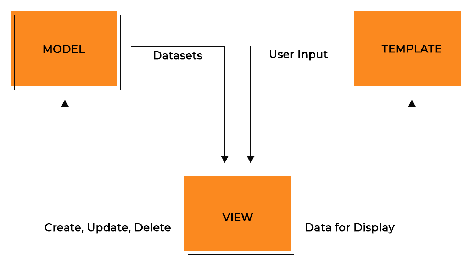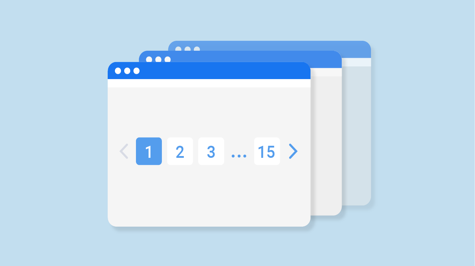Django, a high-level Python web framework, empowers developers to build dynamic and responsive web applications. One fundamental aspect of Django development is conditional view processing, which allows developers to tailor the behaviour of views based on various conditions. This article will explore several strategies and best practices for conditional view processing in Django.
Conditional Template Rendering
Conditional template rendering allows Django developers to dynamically select and render different HTML templates based on specific conditions. This is particularly useful for presenting different views to users based on factors like user roles, data availability, or user preferences.
Example:
from django.shortcuts import render
def my_view(request):
if some_condition:
return render(request, 'template1.html')
else:
return render(request, 'template2.html')
Best Practices:
1. Keep your template logic simple and focused on the presentation.
2. Use template inheritance to avoid code duplication when templates share common elements.
Conditional HTTP Redirects
Conditional HTTP redirects are essential for guiding users to different parts of your application based on specific conditions. This is often used for user authentication, access control, or handling other user states.
Example:
from django.shortcuts import redirect
def my_view(request):
if some_condition:
return redirect('another_view_name')
else:
return redirect('yet_another_view_name')
In this example, users are redirected to different views (another_view_name or yet_another_view_name) based on some_condition.
Best Practices:
1. Ensure clear and informative redirection messages to aid user understanding.
2. Implement proper URL naming conventions for consistency.
Conditional Data Retrieval
Conditional data retrieval in Django views involves fetching data based on specific conditions from a database. This is crucial for presenting users with relevant information and optimizing database queries.
Example:
from django.shortcuts import render
from .models import MyModel
def my_view(request):
if some_condition:
data = MyModel.objects.filter(some_field=some_value)
else:
data = MyModel.objects.all()
return render(request, 'template.html', {'data': data})
In this example, data is retrieved conditionally either by filtering or fetching all records from the MyModel model.
Best Practices:
1. Optimize database queries to minimize database load.
2. Use Django's built-in query optimization techniques, such as select_related and prefetch_related, to reduce the number of database queries.
Conditional Logic Execution
Conditional logic execution allows developers to execute different code blocks within a view based on specific conditions. This is valuable for customizing the behaviour of your application dynamically.
Example:
from django.http import HttpResponse
def my_view(request):
if some_condition:
# Perform some specific logic here
return HttpResponse("Condition is True")
else:
# Perform some other logic here
return HttpResponse("Condition is False")
In this example, different logic blocks are executed based on the value of some_condition.
Best Practices:
1. Maintain clean and well-structured code with proper indentation.
2. Use descriptive variable and function names for clarity.
Conditional Error Handling
Handling errors based on conditions is vital for maintaining the stability and reliability of your web application. Django provides robust mechanisms for handling errors, which can be customized based on specific conditions.
Example:
from django.http import HttpResponseServerError
def my_view(request):
try:
# Some code that may raise an exception
if some_condition:
# Handle condition-specific error
raise SomeException()
except SomeException:
return HttpResponseServerError("An error occurred")
else:
return HttpResponse("No error")
In this example, a custom error (SomeException) is raised conditionally, and it is handled differently based on the condition.
Best Practices:
1. Implement thorough error logging and monitoring to identify and address issues effectively.
2. Provide user-friendly error messages to guide users in error scenarios.
Conditional Authentication and Permissions
Conditional authentication and permissions play a crucial role in controlling access to views based on user roles and privileges. Django's built-in authentication and permission system allows you to implement these conditions seamlessly.
Example:
from django.contrib.auth.decorators import login_required, permission_required
@login_required
def protected_view(request):
if request.user.has_perm('some_permission'):
return HttpResponse("You have permission")
else:
return HttpResponse("Permission denied")
In this example, the @login_required decorator ensures that the user is logged in, and access to the view is further controlled based on the user's permissions.
Best Practices:
1. Use Django's authentication and permission system to manage user access effectively.
2. Implement role-based access control (RBAC) for complex authorization scenarios.
Conditional AJAX Responses
In modern web applications, handling AJAX requests effectively is crucial for providing a responsive user experience. Conditional AJAX responses allow your application to respond dynamically to client-side interactions.
Example:
from django.http import JsonResponse
def ajax_view(request):
if some_condition:
data = {'result': 'Condition is True'}
else:
data = {'result': 'Condition is False'}
return JsonResponse(data)
In this example, JSON responses are returned based on some_condition, which can be used to update the UI or provide dynamic feedback to the user.
Best Practices:
1. Implement proper error handling for AJAX requests to handle potential failures gracefully.
2. Use asynchronous views or Django REST framework for more complex API implementations.
Conclusion
Conditional view processing in Django is a powerful tool for building dynamic and adaptive web applications. By effectively implementing conditional template rendering, HTTP redirects, data retrieval, logic execution, error handling, authentication, and AJAX responses, you can create web applications that respond intelligently to various conditions and user interactions. As you continue to develop with Django, mastering these strategies and best practices will help you build robust and user-friendly web applications.
With these techniques at your disposal, you have the tools needed to create versatile and responsive web applications with Django.
This article provides an in-depth exploration of conditional view processing in Django, offering valuable insights and best practices for each strategy. Developers can use these techniques to build versatile and responsive web applications that adapt to different conditions and user interactions.
Happy coding with Django!






